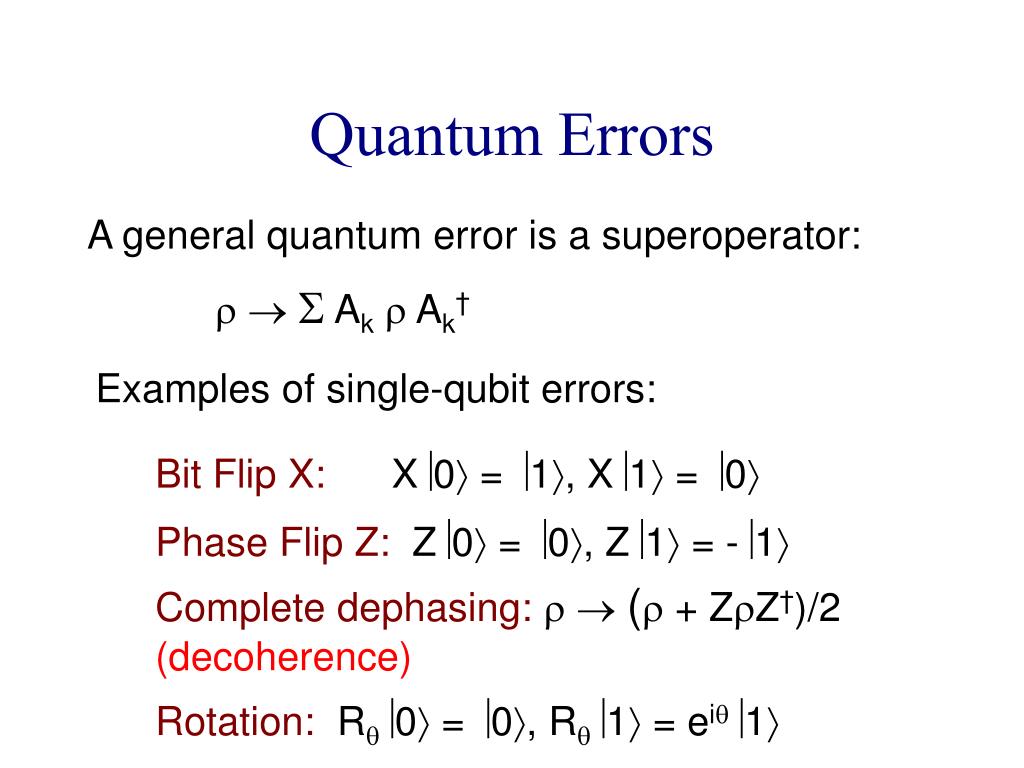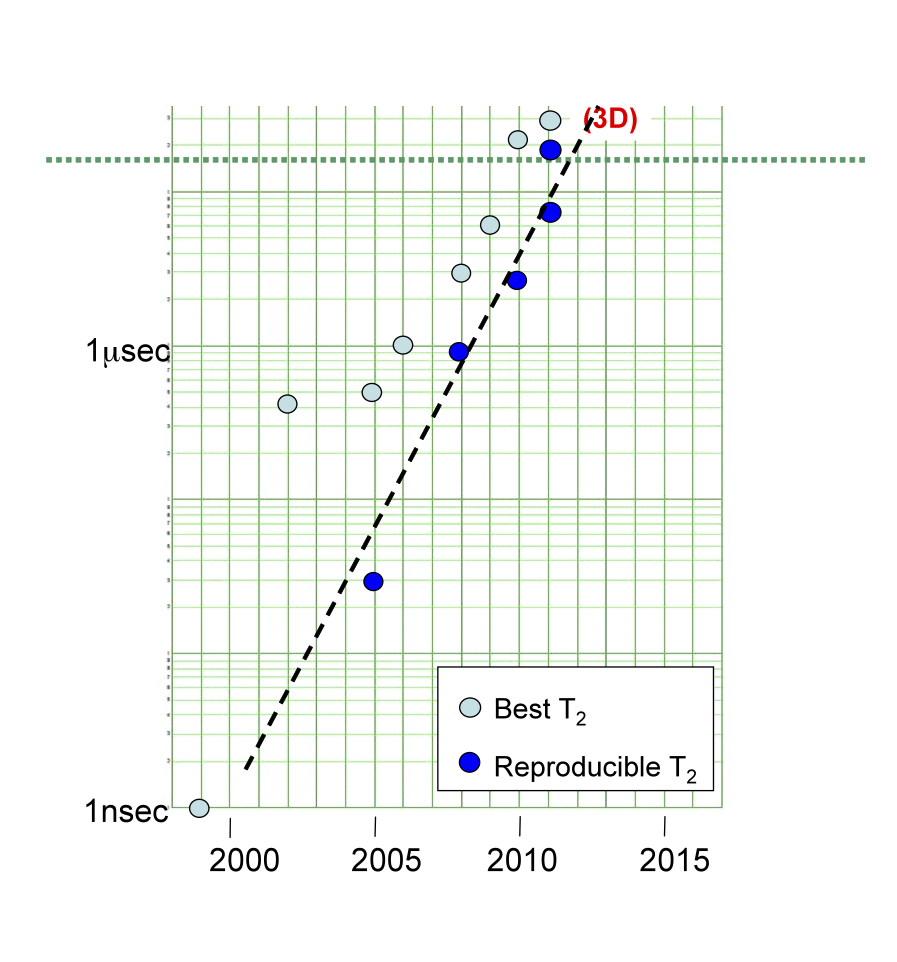
- #QUANTUM ERROR CORRECTION WITH SUPERCONDUCTING QUBITS HOW TO#
- #QUANTUM ERROR CORRECTION WITH SUPERCONDUCTING QUBITS CODE#
Detecting either only bit-flip or phase-flip errors can be realized with a simple error correction code, called repetition code, consisting of qubits arranged in a linear array, as shown in Figure 1.įigure 1: One-dimensional (1D) chain of qubits to protect against a single type of errors.
#QUANTUM ERROR CORRECTION WITH SUPERCONDUCTING QUBITS CODE#
If an error is detected on a data qubit, it should be flipped back to its original state.Ī complete quantum error-correcting code must be able to tackle both types of errors that can affect qubits: bit-flips and phase-flips. Since the data qubits are not measured directly, their states are preserved during the parity measurements, assuming no errors have occurred. By using repetitive measurements on an ancilla qubit, which is the quantum equivalent of parity checks, it is possible to find out whether the neighboring data qubits have undergone bit-flips or/and phase-flips relative to each other. Each ancilla qubit is entangled to its neighboring data qubits, which maps the parity of these data qubits on to that ancilla qubit. Known as quantum error correction code, this method basically creates quantum links between two types of physical qubits, namely the data qubits, which encode the logical qubit and store its state, and the so-called ancilla qubits, which are used to detect errors on the data qubits. This way, errors can be detected and fixed as they pop up in individual physical qubits without affecting the state of the logical qubit. In other words, a set of unreliable physical qubits works collectively as one reliable logical qubit. One way to compensate for high error rates of qubits is to add redundancy and encode one logical qubit within several physical qubits. However, even the best qubits today are not good enough to be directly used in quantum algorithms. To achieve sufficiency low error rates that a practical quantum computer requires, researchers keep improving the quality of qubits to make them more stable and less susceptible to errors. To implement a useful and viable quantum computer, it is essential to find ways to deal with these errors. The qubits that make up a quantum computer are well known to be unstable due to interactions with the environment and prone to errors caused by imperfect quantum gates. However, bringing this technology into reality is not without challenge. Quantum computing is expected to be a game-changing technology that will unlock solutions to problems that are practically impossible to solve with classical computers. The decision is then communicated to the HDAWGs and used for waveform selection to send out the necessary control signals to restore both the data qubits and ancilla qubits back to their original states. The readout results are forwarded to the PQSC for further processing and generation of feedback decision. For this purpose, we detect arbitrary errors on a pair of entangled data qubits in a Bell state by reading out another pair of ancilla qubits using a UHFQA.
#QUANTUM ERROR CORRECTION WITH SUPERCONDUCTING QUBITS HOW TO#
In this blog post, we demonstrate how to realize Bell-state stabilization using the Lookup Table Decoder of the PQSC. Īs a practical application of low latency real-time quantum feedback, we have shown in a previous blog post how rapid qubit initialization can be easily achieved using the Register Forwarding feature of the PQSC. Thanks to its three products UHFQA, HDAWG and PQSC, Zurich Instruments fulfills all of these requirements. Fundamental requirements for realizing this code are high fidelity and rapid readout of qubits, high fidelity gate operations, and performing conditional feedback with latency times much shorter than the qubit coherence times.



Non-Contact Atomic Force Microscopy (NC-AFM)īell-state stabilization with real-time feedback is a key milestone for the implementation of surface code, which is one of the most promising quantum error correction codes for building large-scale quantum computers. Multi-Frequency Atomic Force Microscopy (MF-AFM) Magnetometry with Ensembles of NV Centers Quantum Computing with Superconducting Qubits Tunable Diode Laser Absorption Spectroscopy


 0 kommentar(er)
0 kommentar(er)
